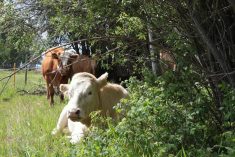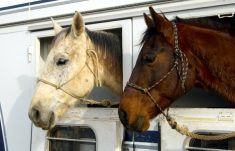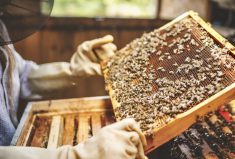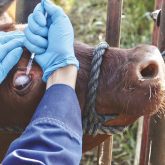There has been a lot of trial work over the years regarding vaccinations of our calves and when would be the most ideal time.
Immunologists would debate this but as situations on farms changed and herds got larger, trends changed. Producers no longer boostered vaccines at four to six weeks apart as was often recommended.
Summer pneumonias cropped up on young calves and are often caused by respiratory viruses such as BRSV (bovine respiratory syncytial virus) or shipping fever bacteria such as pasteurella or mannheimia. Because a four- to six-week gap between vaccination and the booster was always recommended, producers left the initial vaccination to before weaning and then boostered it at weaning. Older calves in the spring were given blackleg, of course, as we knew for sure colostral immunity would wear off but the other vaccines were left out. Summer pneumonias increased in incidence, and to try and avoid these summer pneumonias when calves were hard to spot and check, vaccination was initiated much earlier.
Read Also

Mosquito-borne virus could be devastating to sheep breeding operations
Cache Valley virus, a mosquito-borne disease that infects small ruminants, could be a devastating hit to small operations.
But even though the second booster shot was months apart, producers noticed morbidity and mortality seemed lower. When immunologists looked they found the booster response from the second vaccination (even though it was administered months later) was very good. The discovery that protection was good even with many months in between booster shots was great news. It meant vaccinations could more be co-ordinated with other management procedures and, in most cases, did not require a separate pass through the chute. Whether it was weaning, implanting, or deworming, the second shot of vaccine can be given at the same time as these procedures.
It was also once felt that there may be a maximum number of diseases or antigens that calves could be vaccinated for at any one time. But a normal young animal (or human for that matter) is exposed to almost countless antigens on a daily basis and continuously develops protection or an immune response. It is very hard to overchallenge the immune system.
There was also the worry about vaccinating calves too young because it might block colostral immunity. The calf ingests colostrum in the first few hours of life and the immunoglobulins in the colostrum contain antibodies against the diseases the cow has been vaccinated for or exposed naturally to. This blocks the humoral immune response of the calf.
What has only been discovered fairly recently is that when calves were vaccinated at a very young age, they were still protected many months out. This is what we call cell-mediated immunity.
This also ties into when it is best, from a management perspective, to combine this with other procedures. Many producers are calving later, so calves are either born on grass or go to grass at a very young age. So the only opportunity to administer protective vaccines is at a very young age — otherwise the next opportunity to process calves is when they come off grass in the fall.
Not vaccinating calves at a young age leaves them susceptible to the calfhood diseases, including the blackleg organisms, for several months. So it’s better to vaccinate very young rather than leaving it until fall.
Some companies are now testing vaccines on younger and younger cattle. The labels of many vaccines say ‘not approved for use in calves less than three months of age.’ That is because when the vaccine was approved, those were the youngest calves they had tested at that point. I know for a fact companies have tested calves as young as three days to a week of age.
In the foreseeable future, it might make sense to be able to vaccinate calves as young as one day of age while we process them with the shots at birth and apply their ear tags. That would save considerable labour and give calves the ability to acquire protection against certain neonatal diseases right away. The only dilemma with very young calves (if using modified live vaccines) is you need to use the low-dose bottles and group the calves together in multiples of 10 so you can vaccinate them all within two hours of rehydrating the vaccine. Some vaccines are made in individual doses and that helps. See what your vet advises as to the best vaccination protection for your young calves.
Vaccine companies are using intranasal technology more and more, which is very easy to administer to inquisitive young calves and less stressful as there is not the pain of a needle. These intranasal products are being tested on very young calves — and that is a great indication of their safety.
There are now a few intranasal vaccines for IBR PI3, including one in which BRSV is also included. A brand new intranasal vaccine has just been released that works for the bacterial causes of pneumonia mannheimia and pasteurella and tested on week-old calves. This allows you to give protection for all the main respiratory pathogens (except BVD) in two intranasal vaccines. It eliminates giving needles to the very young calves and protection with the intranasal vaccines occurs very quickly (in about 48 hours).
To take advantage of the times you handle young calves, consider whether vaccinations are warranted, and check with your herd veterinarian about which vaccinations he or she recommends for young calves in your area.
We always find the naysayers who have never vaccinated, but all they need is a blackleg or respiratory outbreak to make them believers. Vaccination is still the simplest and effective form of biosecurity you can do for your cattle and will cut down antibiotic usage on young calves in most herds. Happy calving and remember to vaccinate.
















